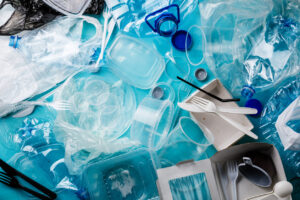As the hot weather and summer holidays are drawing near, Victorians will be flocking to the bays and beaches to chill out and soak up some rays. Whilst enjoying ourselves and having some down time we should also make sure we treat our beautiful beaches well and act responsibly by taking home all our beach litter.
CSIRO completed a survey which included approximately every 100 km along the Australian coastline. According to these reports, around three-quarters of the beach litter (or marine debris) along the coast within Australia is plastic. And of this most is from Australian sources, not from overseas, with debris concentrated near urban centres.
What harm does beach litter (marine debris) do?
Litter impacts wildlife directly through entanglement and ingestion and indirectly through chemical affects. As the quantity of debris increases in the marine environment, so does the likelihood of impacts from debris to marine animals. Plastic production rates are intensifying, and the volume of refuse humans release into marine systems is growing at an exponential rate. Even toothpaste and personal care products can have plastic microbeads in them. These microplastics can be mistakenly eaten by a range of marine species.
How can we help reduce beach litter?
As people are the biggest contributors to the issue of beach litter we can flip it on its head and become a vital part of the solution. Here are a few ways you can help:
- If there are not bins, ensure you take your rubbish home with you (and correctly dispose of it in general waste or recycling).
- Dispose of extinguished cigarettes appropriately or place in a personal ash tray to take home.
- Become a part of a Beach Clean Up.
- Help CSIRO gather data by conducting a ‘Marine Debris Beach Survey’.
For further information on the extent of beach litter / marine debris in Australia go to CSIRO.
For an infographic of some common beach litter items that are found discarded or washed up on our coastlines and tips on the best way to responsibly dispose of them click here.
Source: CSIRO Marine Debris Fact Sheet



